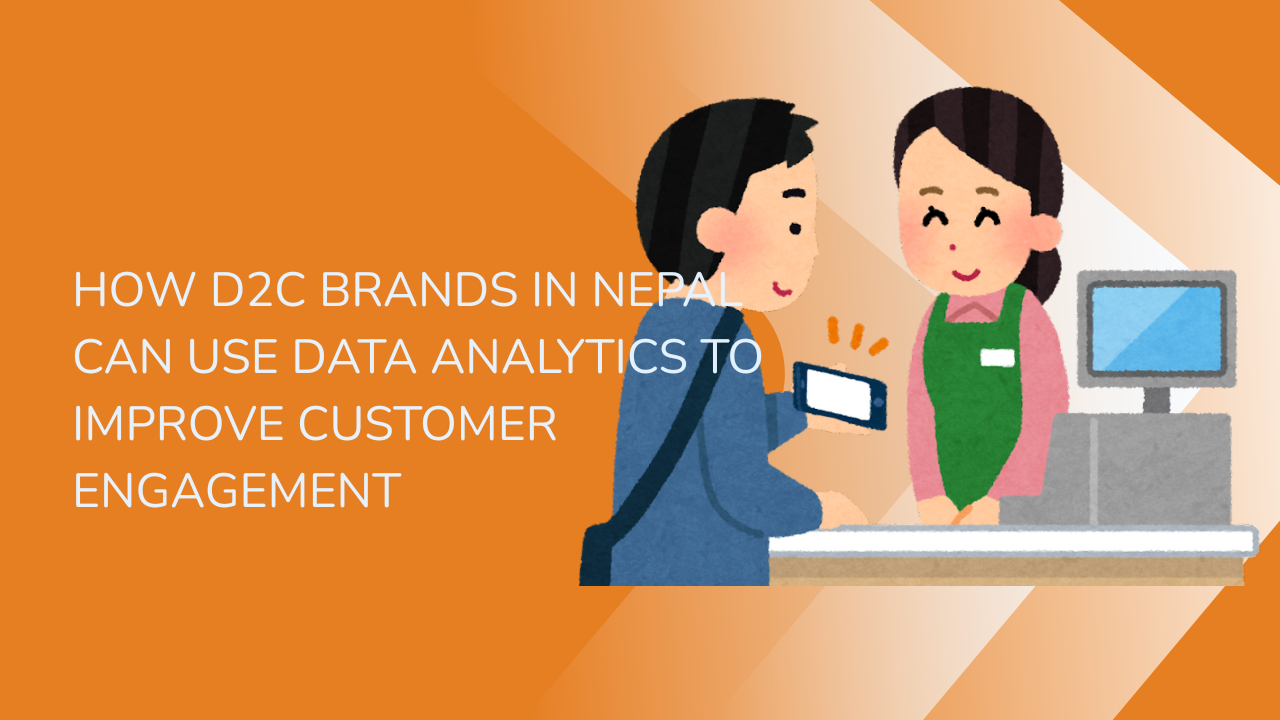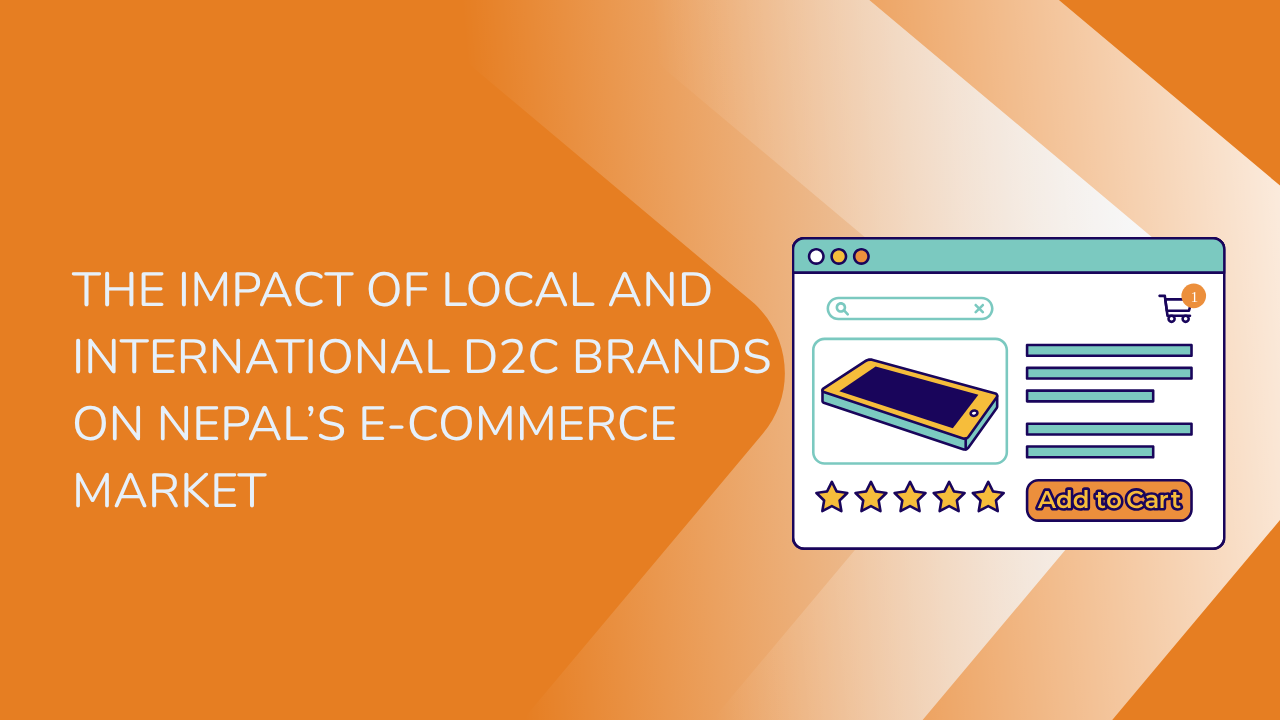Share this Article
In today's rapidly evolving digital landscape, data analytics has become a fundamental tool for businesses across the globe. For Direct-to-Consumer (D2C) brands in Nepal, leveraging data analytics is not only a competitive advantage but a necessity. With consumer behavior becoming increasingly sophisticated, understanding and engaging with customers at a personalized level is essential for sustained growth. Data analytics offers D2C brands the ability to gain invaluable insights into consumer preferences, which can then be used to develop customized marketing strategies, refine customer journeys, and improve engagement. This article explores how Nepali D2C brands can leverage data analytics to improve customer engagement, driving sales, loyalty, and overall business success.
1. Understanding the Importance of Customer Behavior Analysis
Customer behavior is the foundation upon which any successful marketing strategy is built. For D2C brands in Nepal, understanding how customers interact with a brand’s website, mobile app, or social media platforms is crucial to ensuring a smooth and personalized customer experience. By tracking consumer behavior through data analytics tools, brands can gather information on what customers are browsing, purchasing, and even what products they are abandoning.
One of the most effective ways to utilize this data is by examining the "customer journey"—the path that a consumer takes from discovering the brand to making a purchase. For instance, analyzing the pages a customer visits, how long they stay on each page, and their purchase frequency can give insights into which products attract attention and what may be causing a potential loss of interest.
Additionally, data analytics can help identify the peak times when customers are most active, allowing brands to optimize content, product offerings, and promotions to align with customer preferences and activity patterns. For example, if a customer frequently browses eco-friendly products but doesn't make a purchase, a brand can use data to send reminders or suggest related eco-friendly items, improving the chances of conversion.
2. Personalizing Marketing and Product Recommendations
Personalization is perhaps the most effective way to engage customers, and it is data analytics that makes personalization possible. By using customer data, brands can tailor their offerings in a way that appeals to individual preferences, creating an experience that feels unique and relevant.
In the context of D2C brands in Nepal, personalization goes beyond just addressing a customer by name in an email. It involves offering products that align with their previous interactions with the brand. By analyzing past purchase data or browsing habits, D2C brands can provide product recommendations that are tailored to a customer’s interests. For example, a customer who previously purchased a pair of running shoes may be interested in new sportswear or accessories. Similarly, customers who often view a particular category of products, such as skincare or electronics, can be shown products within that same category to encourage further engagement.
Moreover, personalized email marketing campaigns are another key element of a D2C brand’s strategy in Nepal. A data-driven approach allows brands to segment their customer base and send them more relevant content. This could be a personalized email promoting a discount on a product they viewed but didn’t purchase, or it could be an exclusive offer on a product similar to one they have bought in the past. When customers feel that a brand understands their needs, they are more likely to engage and make repeat purchases.
3. Optimizing Pricing and Promotions with Data Insights
Pricing and promotions are crucial elements in driving sales and fostering customer loyalty. However, determining the optimal price for products and the best times to run promotions can be a challenge. This is where data analytics steps in.
For D2C brands in Nepal, tracking data on past purchases, seasonal trends, and competitor pricing can help inform decisions regarding product pricing and promotions. For instance, if analytics reveal that customers are more likely to purchase a product during a certain time of year, brands can optimize pricing strategies or run targeted promotions during those periods to boost sales. Similarly, by analyzing customer purchase history, brands can offer personalized discounts, limited-time offers, or loyalty rewards to increase customer retention and encourage repeat purchases.
Data analytics can also assist in determining how price-sensitive the target audience is. If a significant portion of the customer base is price-conscious, brands can adjust their pricing strategy accordingly—offering lower-cost alternatives or special deals that cater to this demographic. On the other hand, if customers are willing to pay more for premium products, brands can refine their product offerings and price points to align with this willingness to spend.
4. Improving Customer Retention with Predictive Analytics
Customer retention is one of the key drivers of long-term success for D2C brands. Acquiring new customers is important, but retaining existing ones is more cost-effective and ensures consistent revenue growth. Predictive analytics is a tool that can significantly improve customer retention by helping D2C brands identify patterns that indicate when a customer is likely to stop engaging with the brand.
Predictive models use historical data to forecast future behavior, allowing brands to proactively intervene when a customer is showing signs of disengagement. For example, if a customer has not interacted with the brand in a set period, predictive analytics can alert the brand to re-engage that customer with targeted offers, personalized recommendations, or incentives. Furthermore, predictive analytics can be used to identify customers who are likely to make repeat purchases or those who may be considering discontinuing their relationship with the brand.
By understanding and anticipating customer needs, brands can create targeted retention strategies, such as loyalty programs or special offers, to re-engage customers and keep them loyal to the brand.
5. Social Media and Data Analytics Integration
Social media is an essential platform for D2C brands in Nepal, offering brands a direct line of communication with their customers. In the context of data analytics, social media provides an invaluable source of customer feedback, sentiment, and engagement data.
D2C brands can use data analytics tools to track which types of posts are generating the most engagement, whether it's product-related content, behind-the-scenes videos, or customer reviews. By analyzing this data, brands can identify the content types and formats that resonate most with their audience, allowing them to tailor future posts accordingly.
For instance, if a product demonstration video on Instagram receives a high level of engagement, brands can create more similar content to drive further interaction. Likewise, by monitoring social media sentiment, brands can track how customers feel about their products and services, identifying potential issues before they escalate into larger problems. Engaging with customers through these platforms can also help build a sense of community, further improving customer loyalty and long-term engagement.
6. Data-Driven Influencer Marketing
Influencer marketing has gained popularity in Nepal, with many D2C brands relying on social media influencers to reach a broader audience. However, measuring the success of influencer campaigns can be tricky without data-driven insights. Data analytics allows brands to assess the effectiveness of influencer partnerships by tracking engagement metrics, sales, and ROI.
By analyzing data from influencer campaigns, D2C brands can evaluate which influencers are driving the most traffic, engagement, and conversions. Furthermore, brands can use analytics to identify influencers whose audience demographics align with their target market. This ensures that marketing dollars are spent on influencers who have the greatest potential to deliver results.
In addition to performance tracking, data analytics can also help D2C brands optimize their influencer collaborations. Brands can fine-tune their messaging, content formats, and campaign structure based on previous data to ensure greater effectiveness in future influencer partnerships.
7. Feedback and Sentiment Analysis
Another important aspect of customer engagement is actively listening to customer feedback. In Nepal’s competitive e-commerce landscape, being responsive to customer concerns and suggestions can help build trust and loyalty. Data analytics tools such as sentiment analysis can track customer sentiment across different touchpoints, including social media, reviews, and customer service interactions.
By analyzing customer feedback, brands can pinpoint common complaints, identify product issues, and improve customer service operations. For example, if a brand notices a trend of negative sentiment regarding a particular product feature or service, they can take corrective action to address the issue before it becomes widespread. Moreover, brands can use positive customer feedback to reinforce their brand's value and build a stronger connection with their audience.
Conclusion
For D2C brands in Nepal, data analytics is not just a tool for measuring performance—it's an integral part of building meaningful relationships with customers. By utilizing data to understand consumer behavior, personalize marketing efforts, optimize pricing and promotions, and improve customer retention, brands can significantly enhance customer engagement. Additionally, data analytics can help D2C brands refine their social media strategies, influencer marketing efforts, and product offerings to ensure they are always meeting customer needs.
In Nepal’s dynamic e-commerce environment, adopting data analytics will help D2C brands not only stay competitive but also create deeper, more valuable connections with their customers, fostering long-term growth and success.
Categories:
Beginner’s Guides
Tags:
Online Store in Nepal
,
5 Simple Steps
,
local businesses
,
e-commerce app
,
Small Business
,
strong brand
,
E-commerce
,
Role of Social Media
,
Growing sales







